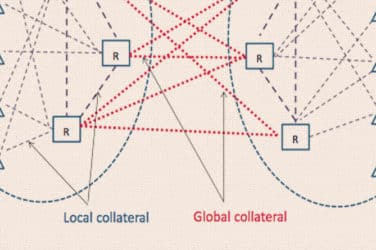By Ted Leveroni, Executive Director of Strategy and Buy-side Relations, DTCC

Ted Leveroni, DTCC
In March, regulations based on the International Organization of Securities Commissions’ (IOSCO) revised variation margin (VM) collateral rules were initially introduced for all parties to uncleared derivatives transactions in several of the largest financial markets globally. Firms were given a six-month grace period to prepare for compliance, with regulation coming into full force on September 1.
Under the revised rules, virtually all counterparties are required to post margin based on daily marked-to-market valuation of their uncleared derivative transactions. This essentially holds parties to an uncleared derivatives transaction to similar margin collateral standards as central clearing houses impose on cleared transactions.
As a result, the implementation of these rules has significant implications for a firm’s operations, capital management and regulatory compliance. Many firms have had to re-evaluate their internal processes and procedures, including in the areas of human resources and information technology.
Industry Implementation & Main Challenges
GlobalCollateral conducted a study earlier this year to better understand industry readiness for the mandate. It became apparent that there was a lack of clarity around the rules, who they applied to, and how best to comply with them.
The Credit Support Annex (CSA) effort was cited as the most significant area of concern. Re-papering CSAs is a huge undertaking and, at a global level, required firms to repaper well over 100,000 new contracts. The scope of the challenge varied based on how many CSAs needed to be renegotiated, ranging from a dozen for smaller firms to hundreds for larger firms.
We found that while the vast majority of CSAs that needed to be re-negotiated were done so in time, even after successful renegotiation, there is follow-up work with “operationalizing” new CSAs. Depending on a firm’s collateral management technical capabilities, entering new, often complex CSA terms and conditions can be a challenging, highly manual task.
Another significant challenge was the forecast need to increase operational capacity to meet increased margin call volume. We found that 53% of respondents expected their margin call volume to at least double, while nearly all expect the size of their collateral management teams to less than double. This suggests that these companies are either expecting the same number of employees to handle higher volumes of margin calls, or that they will have new IT systems to handle the increased intensity.
Solutions
The findings of this report highlighted a number of challenges to keep pace with the growing complexity in the margin call process, which require a coordinated effort to address. Overall, this points to the need for achieving greater process and data standardization and increasing collateral management operations automation for efficient and effective processing and compliance.
There is an opportunity for financial firms to concentrate on the consistency of data between firms and to leverage proven technology, best practices and communications standards where they exist, while being measured on how to deploy IT resources and invest in areas where significant revisions are necessary. This implies a need to undertake a “fit-gap” analysis of solutions that are available on a utility basis. Where a solution is found, multiple firms can sign on to a community-based system that automatically delivers seamless, efficient, transparent, standardized and risk-neutral processing internally, as well as between firms and jurisdictions.





